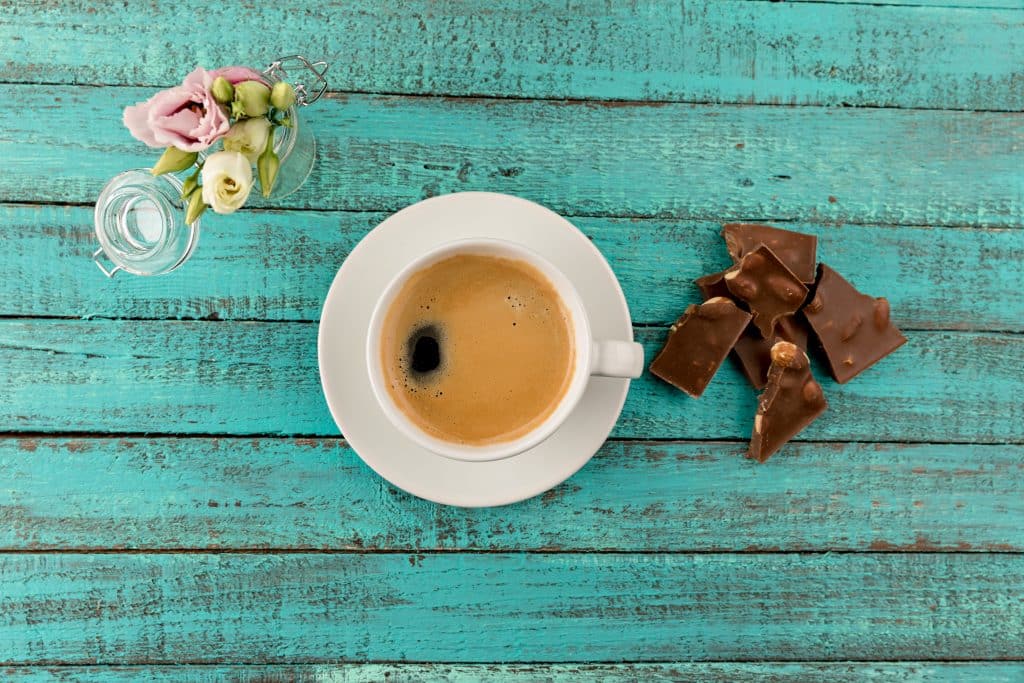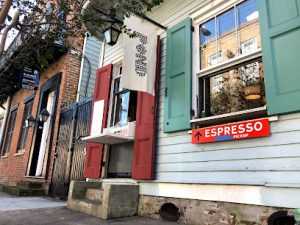
Ember Self-Heating Mug Review
Ember Mug Mugs are one of the items that can be found in every home. It takes hot fluids, mainly tea, coffee, and hot chocolates. A
It’s no secret that chocolate and coffee are closely connected. A sip of coffee after you had a piece of chocolate tastes fantastic. No wonder coffee shops often give you a complimentary piece of chocolate next to your latte or espresso.
But the question remains: why are chocolate and coffee so good together?
Taste plays a significant part in this popular combination. Cocoa beans and coffee share similar flavors. But, paired together, they bring out new flavors in each and enhance others. That’s why when you mix them, they not only taste good together but improve each other.

In addition to tasting similar, coffee and chocolate have a similar chemical makeup. Both sweet and drink contain caffeine, albeit in different levels. They also both possess antioxidants, and these come with significant health benefits. These include:
But they’re not identical. One key distinction between chocolate and coffee is the magnesium in chocolate. Magnesium is essential for helping regulate:
But while chocolate and coffee have similarities, and those make them culinarily compatible, historically speaking, they serve different purposes.
It’s true both chocolate and coffee are stimulants. It will come as no surprise to coffee lovers everywhere that coffee’s primary purpose is to kickstart the body. And those antioxidants it possesses help to energize you first thing in the morning.
Chocolate is likewise stimulating. As discussed, it contains caffeine, though how much depends on the type of chocolate. But it also includes the milder stimulant theobromine. Usually, we talk about theobromine in tea since that’s what it’s primarily associated with
The slow-acting nature of the theobromine stimulant is why tea hugs you awake while coffee firmly kicks you in the metaphorical ribs. But you also find theobromine in chocolate, and because theobromine not only stimulates but relaxes the muscles, it became a popular drink of choice before bed.
That makes chocolate a popular nighttime drink. Despite the presence of caffeine and often sugar in hot chocolate powder, in conjunction with warm milk, the drink can be soporific.
But while many of us enjoy an evening cup of cocoa, it wasn’t always for public consumption. Historically, chocolate was an extravagance. That made it the property of royalty, and it featured prominently in rituals and ceremonies.
On the other hand, coffee quickly overtook tea as the beverage of choice in 17th century Britain. It was new, exotic, and accessible to the people. Not only that, but local coffee houses became the go-to place for radical, revolutionary types anxious to talk politics and their recently reformed democracy without drawing royalist scrutiny.
But where did that coffee come from? And is it related to chocolate?
To start with, there wasn’t always an awful lot of coffee in Brazil because, in the beginning, coffee came from Africa. It was highly prevalent in Arabia and Yemen.
Chocolate, on the other hand, came from South America.
But over time, the two beans swapped places, and coffee now grows primarily in South America while chocolate usually hails from Africa.
There’s a lot of clear blue water between Africa and South America, however, and that gets us back to the question of whether coffee and chocolate are related.
You would be forgiven for supposing they were. Both come from beans, and both cocoa and coffee beans need to be fermented and roasted to some degree before distribution.
But much like their historical functions in society, these are two highly distinctive beans. In fact, they come from two completely different plants.
Coffee derives from the coffee plant and, in a shocking culinary twist, coffee is a fruit. Thus, the beans coffee aficionados enjoy are the seeds of that fruit.
The method used to separate the seed from the fruit can vary by region. But, seeds extracted, they are hulled and dried until they become the coffee beans you buy at your local supermarket.
In comparison, chocolate comes from trees. Farmers harvest the cocoa pods and then split them to extract cocoa beans.
After that, the beans get fermented, roasted, and deshelled. But throughout the process, it’s hard to spot the resemblance to store-bought chocolate. Only when you start grinding the beans to powder do they start resembling that sweet, indulgent treat.
That’s because the shared flavors in chocolate and coffee enhance one another. It’s the confectioner’s equivalent of pairing the right wine with the right food.
If you think that means different chocolates go better with different types of coffees, you’ve guessed right. Here are some of our favorites.
Espresso is famously rich, dark, and stronger than garden variety coffee. Consequently, it goes beautifully with equally strong, dark chocolate.
Espresso has subtle, nutty notes, and they stand out against the bitterness of the cocoa in dark chocolate. As a rule, the darker your chocolate, the better these two combine. 70% cocoa works perfectly, but the stronger the chocolate, the better.
Sumatran coffee can have a spiciness to it. Dark chocolate tempers that, but to do it well, you want slightly lighter chocolate than you’d drink with your espresso.
What could be more classic than a bit of milk chocolate with coffee and milk? Because coffee beans derive from fruit, there can be a fruitiness to them. The sweetness of milk chocolate is the perfect grace note to balance those fruity flavors.
What chocolate you pair with what coffee is purely a matter of taste. If you prefer the sweetness of milk chocolate with the more potent espresso, then nothing should stop you from combining them that way.
At the end of the day, coffee and chocolate go well together because, in certain combinations, they bring out complimentary flavors.
And while their origins, histories, and growing processes may be different, they share certain similarities in the manufacturing process.
At their strongest tend towards a bittersweet taste that is difficult to resist.
And really, why try?
So pour a cup of coffee, grab a bar of your favorite chocolate, and indulge.
Caffeinated greetings,
MonsieurCoffee.com is a participant in the Amazon Services LLC Associates Program, an affiliate advertising program designed to provide a means for sites to earn advertising fees by advertising and linking to Amazon.com. We earn small commissions on purchase made through links on this site, at no extra costs to you.
Click Here to See How

Ember Mug Mugs are one of the items that can be found in every home. It takes hot fluids, mainly tea, coffee, and hot chocolates. A

I love making coffee with a Chemex. It is a great piece of gear and the coffee you get from it is just delicious. But

10 Best Coffee Places in Knoxville, TN If you are local or just visiting Knoxville, it is important to have a wonderful coffee experience if

Anyone serious about coffee knows that grinding your own coffee beans is one of the best things you can do to improve the quality of